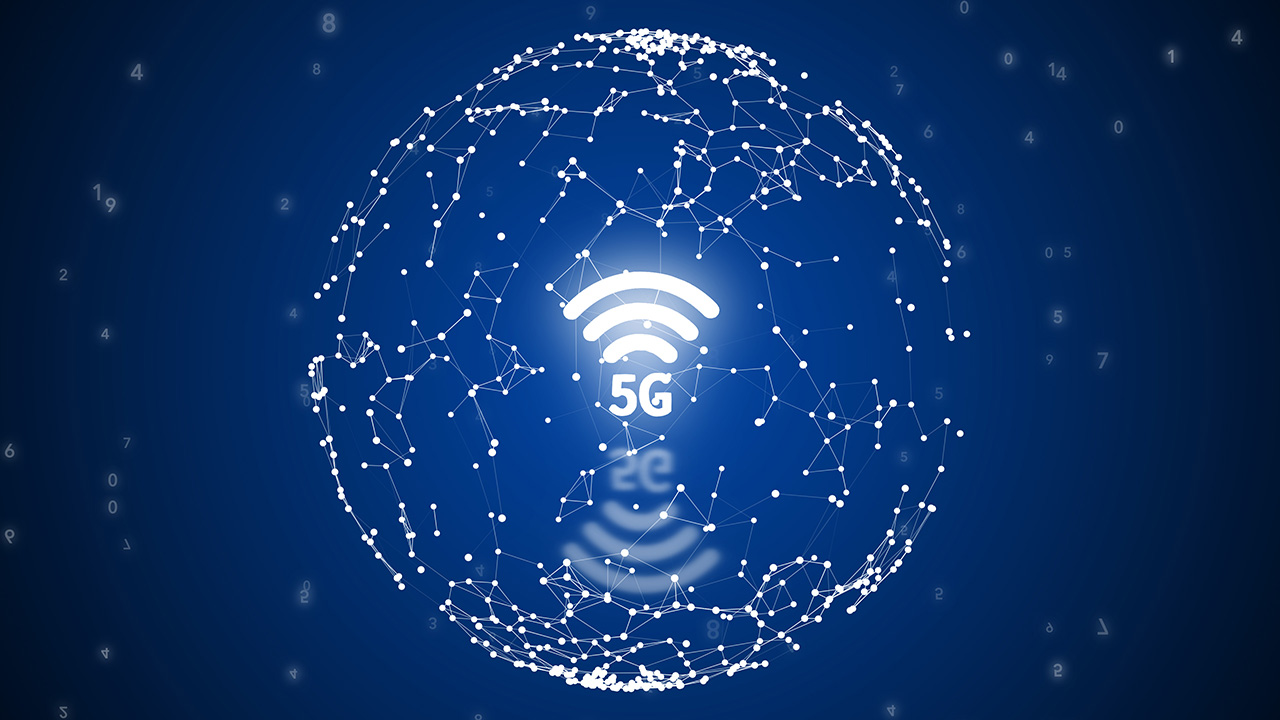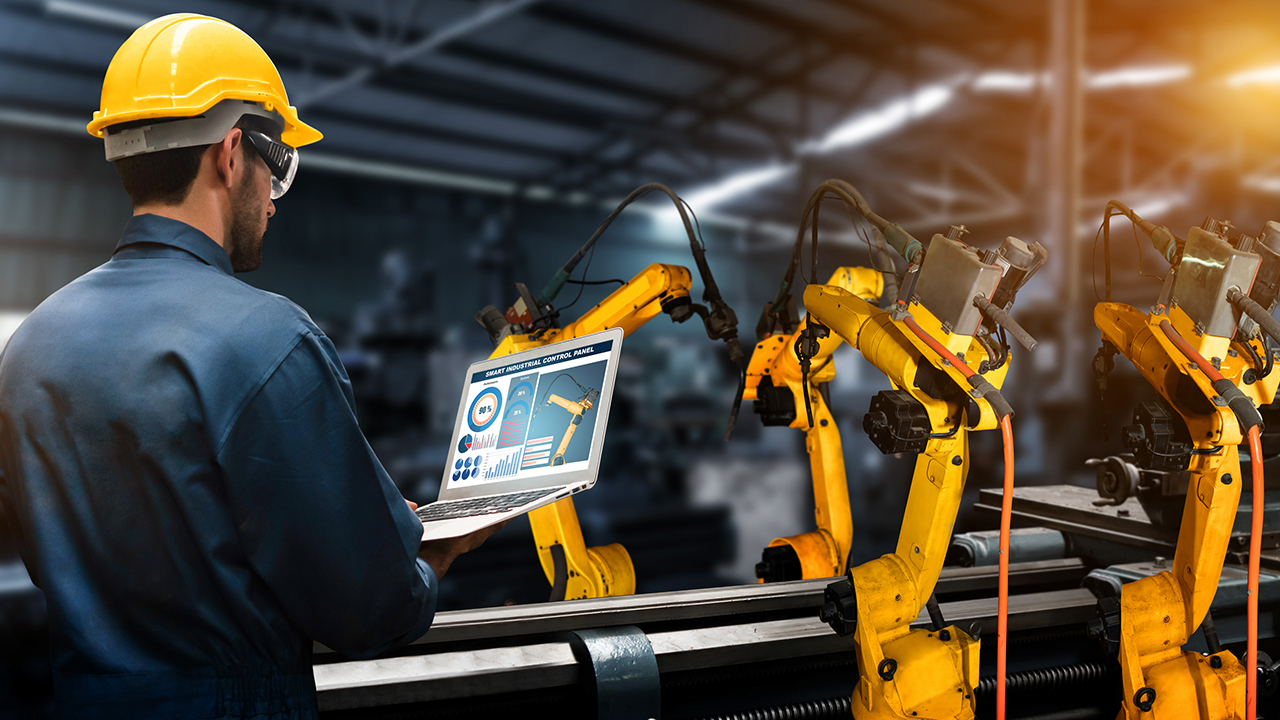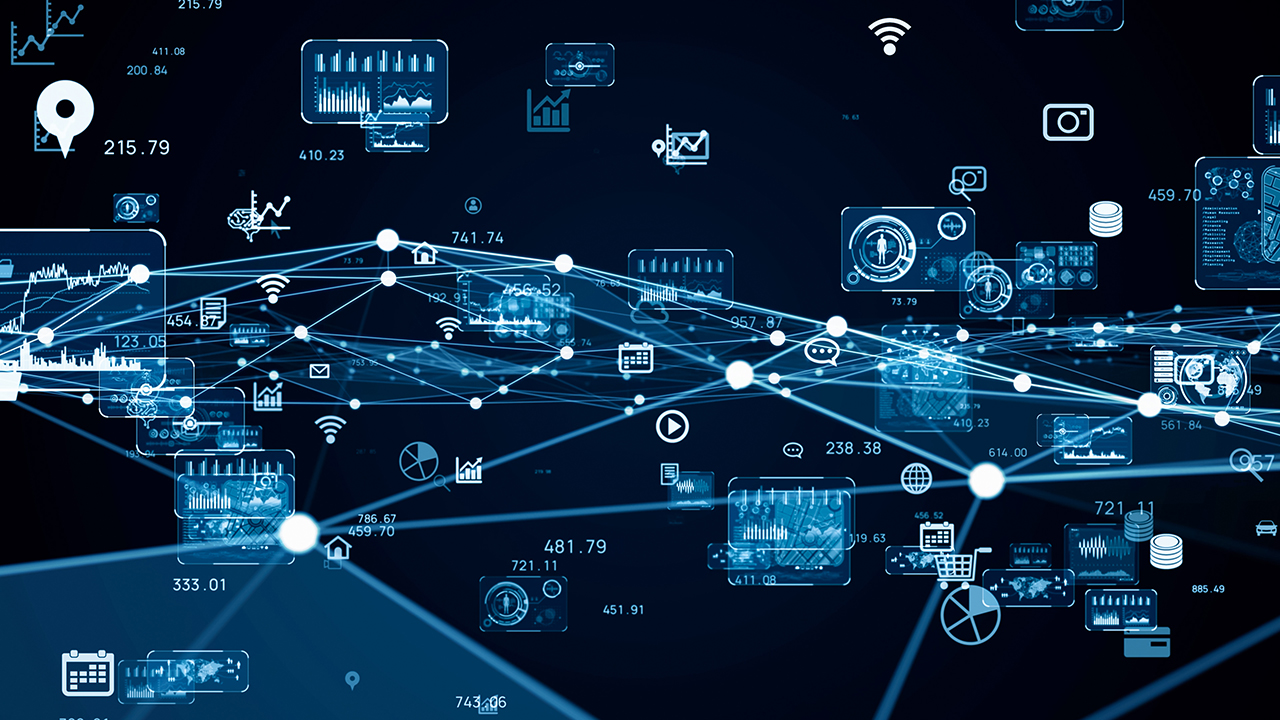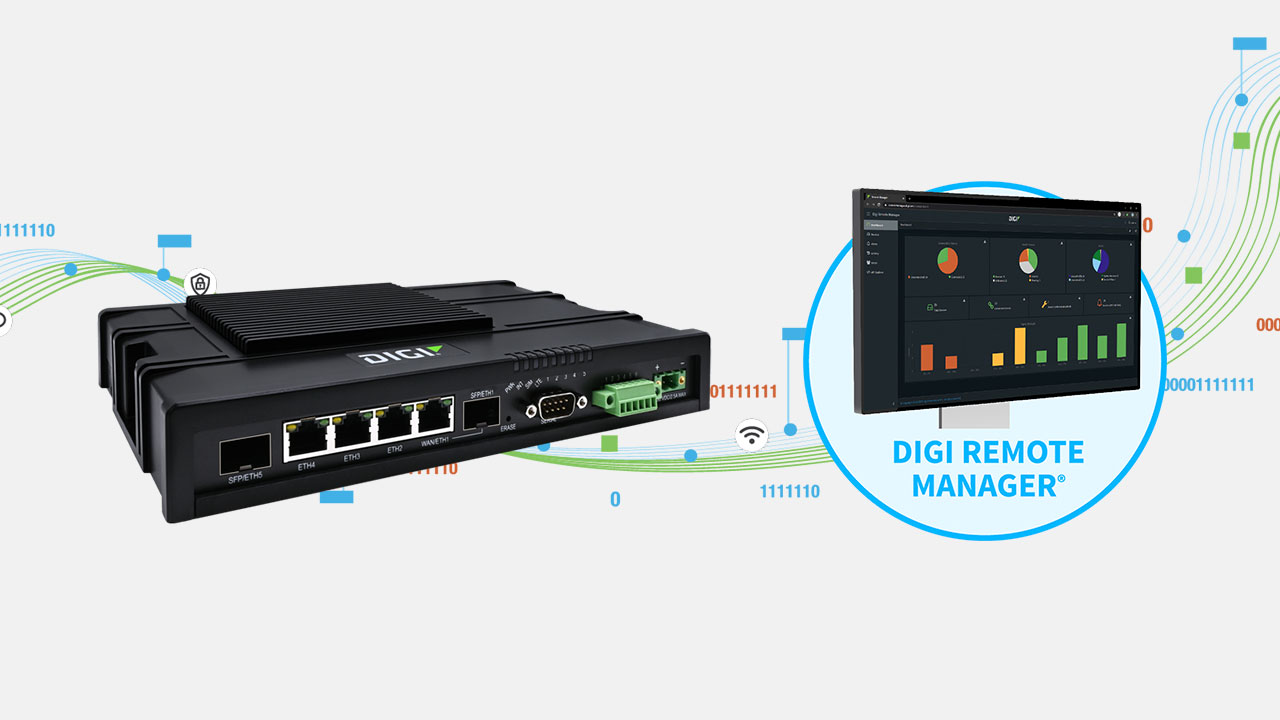物联网 (IoT) 在功能上彻底改变了制造和生产部门。通过IoT
工业技术通过 5G 边缘计算,工厂车间将体验到更高的效率、更高的精度和优化的性能,同时提高安全性。5G 边缘计算为以下领域的下一步发展创造了机遇
工业IoT在功能上为
工业 4.0.
虽然很多人都知道 5G 和边缘计算是两种独立的技术,但并非所有人都了解两者是如何相互交织在一起的。同样,有些人忽视了将边缘计算和 5G 结合在一起的潜在优势,包括 5G 边缘计算为早期采用者提供的优势。
5G 边缘计算为工业IoT 和工业自动化提供了卓越的网络性能,与其前身 4G LTE 相比,吞吐量得到增强,延迟显著降低。此外,它还允许制造商在专用网络内体验增强的安全性,同时提供边缘虚拟化,从功能上重塑IoT 。
什么是 5G 边缘计算?
5G 边缘计算是两种技术的交叉:5G 网络技术和边缘计算。它将高速网络技术与分散的计算能力结合在一起,以提高运营效率,并近乎实时或真正实时地进行数据驱动的调整。

5G 网络是无线连接技术的演进,与前代网络相比,其功能有了显著提升。总体而言,5G 有三大优势:
- 数据传输加速,最高可达千兆比特/秒,比 4G LTE 快 10 倍之多
- 减少延迟,可降至个位数毫秒
- 通过增加带宽提高容量,同时支持更多IoT 设备
边缘计算涉及在网络 "边缘 "进行的数据处理。在传统方法中,数据被传输到一个中心位置以完成计算并生成命令,然后命令必须返回到原始设备。这就造成了一定程度的延迟。
通过边缘计算,计算发生在设备层面。数据不会被发送到中心位置进行处理,而是在IoT 技术栈的边缘进行处理,从而加快了命令的发布速度,消除了不必要的延迟。从功能上讲,边缘计算节省了时间,而且由于数据不传输到中央位置,可用带宽也不会紧张。
5G 与边缘计算相结合,可以更有效地支持高要求的应用,包括制造业中的工业机器人、自动化和人工智能 (AI)。
5G 边缘计算为工业 4.0 搭建舞台的 5 种方式

工业 4.0 依赖于一个核心理念:设备互联。工业互联不同于办公室互联,需要卓越的可靠性和坚固耐用的解决方案,以抵御设施内常见的不可预测甚至危险的条件。减少延迟同样至关重要,因为数据传输延迟会降低生产效率。
5G 边缘计算可以解决(甚至消除)阻碍工业 4.0 的许多挑战,从而有效地为智能制造设施的下一步发展奠定基础。以下是边缘计算和 5G 为工业 4.0 铺平道路的五种方式。
1.减少实时通信的延迟
 通过 5G 边缘通信,工业公司创建了一个协作系统,通过放弃中心处理点,转而进行设备级计算和设备间直接通信,减少了延迟。此外,由此产生的网络可创建一个多接入边缘计算层,从而创造出模拟云计算解决方案的计算能力,而不会出现与真正的云计算相关的传输延迟。
通过 5G 边缘通信,工业公司创建了一个协作系统,通过放弃中心处理点,转而进行设备级计算和设备间直接通信,减少了延迟。此外,由此产生的网络可创建一个多接入边缘计算层,从而创造出模拟云计算解决方案的计算能力,而不会出现与真正的云计算相关的传输延迟。
5G 还比以往的无线技术迭代速度更快。延迟可低于 5 毫秒,远低于 4G 通常达到的 60 到 100 多毫秒。峰值速度可达20 千兆比特/秒。
许多性能提升都与毫米波的使用有关。5G 信号主要在 30 至 300 千兆赫范围内,比以往的网络迭代频率更高,从而提高了数据承载能力。因此,该系统可支持接近或真正的实时通信。
2.提高可靠性和耐用性
 通过 5G 驱动的IoT ,密集的网络节点部署--可能多达 每50平方米一个节点 - 这不仅提高了可靠性,还在本质上纳入了冗余功能。从本质上讲,这创建了一个网状网络,可提供故障切换选项。这种设计允许IoT 设备和其他连接设备在单个节点出现故障时转移到附近的其他节点。
通过 5G 驱动的IoT ,密集的网络节点部署--可能多达 每50平方米一个节点 - 这不仅提高了可靠性,还在本质上纳入了冗余功能。从本质上讲,这创建了一个网状网络,可提供故障切换选项。这种设计允许IoT 设备和其他连接设备在单个节点出现故障时转移到附近的其他节点。
工业 5G 连接解决方案通过提高耐用性进一步增强了可靠性。其设计坚固耐用,可确保在具有挑战性的环境中正常运行。例如,工业路由器可抵御灰尘、湿气和极端温度,使其能够在生产设施和室外使用。
3.通过专用网络加强安全
 虽然公共云计算已经改变了许多行业,但制造和生产设施在采用这些解决方案方面却进展缓慢。核心原因主要是出于安全考虑,包括使用共享计算环境和可广泛访问的无线网络,尽管对可靠性的怀疑也是一个原因。
虽然公共云计算已经改变了许多行业,但制造和生产设施在采用这些解决方案方面却进展缓慢。核心原因主要是出于安全考虑,包括使用共享计算环境和可广泛访问的无线网络,尽管对可靠性的怀疑也是一个原因。
对于 5G,实施专用网络是一条可行之路。工业设施可以在功能上与移动网络分离,同时实现与有线网络类似的速度。这些解决方案还能带来与公共云类似的计算能力,同时确保敏感数据不外泄。
4.改造现有基础设施,简化实施过程
 许多技术革命都需要更新基础设施才能充分发挥作用。然而,有了 5G 边缘计算,改造就成为可能。企业可以利用现有的设备和基础设施,将边缘智能融入其中。
许多技术革命都需要更新基础设施才能充分发挥作用。然而,有了 5G 边缘计算,改造就成为可能。企业可以利用现有的设备和基础设施,将边缘智能融入其中。
实际上,具有 5G 连接性的边缘计算可以让工业企业满足不断变化的需求。纳入远程监控、增加传感器、扩展网络和实施闭环控制,都不需要制造或生产设施从头开始改造其技术堆栈。此外,工业企业还可以将目的驱动型连接纳入其中,在不完全重建网络的情况下增强现有解决方案的功能。
5.通过加强设备协作优化运行
 自动化是更广泛的智能制造领域的重要组成部分,而 5G 边缘计算则将这一概念提升到了新的高度。通过提供计算能力的设备和支持近乎或真正实时通信的高速网络,IoT 设备可以协同工作。
自动化是更广泛的智能制造领域的重要组成部分,而 5G 边缘计算则将这一概念提升到了新的高度。通过提供计算能力的设备和支持近乎或真正实时通信的高速网络,IoT 设备可以协同工作。
数据可以在边缘设备和设备之间传输,而无需通过中央处理点转发,从而极大地限制或消除了潜在的延迟。然后,设备可以对接收到的数据进行评估,以识别瓶颈、分析能源使用或检测其他问题,从而有理由对生产进行调整。
在功能上,这种协作程度使设备能够确定具体操作的速度和频率。反过来,系统会根据当前的设施条件实时生成优化的工作流程,所有这一切都无需工作人员的直接干预。同样,这些系统的协作性质也支持智能资源分配,确保能源、材料和其他资源被分配到最需要的地方。
常见问题

为什么 5G 有利于边缘计算?
5G 增强了边缘计算的现有能力。更快的网络速度加快了设备间的通信,创造了一个能够有效利用自动化的协作环境,同时纳入了实时工作流程优化。总而言之,这大大提高了性能。此外,它还使包括人工智能和机器学习在内的高需求技术更加可行,支持更好的应用响应时间,并加快数据收集和处理速度。
5G 将如何影响边缘计算?
5G 网络速度支持近乎或真正的实时通信,使网络连接设备能够更快地进行通信,从而创建一个可简化自动化解决方案的协作环境。实时工作流程决策可基于当前的设施条件,通过智能资源分配和优化任务或功能时间安排,提高运营灵活性并消除瓶颈等常见挑战。
5G 边缘计算的价值机遇是什么?
借助 5G 边缘计算,企业可以通过分散数据处理来优化运营和工作流程。计算可在设备层面进行,从而减少对网络和服务器等其他计算设备的压力。此外,利用 5G 边缘计算和IoT 设备还可以进行实时生产调整,确保优化工作流程,提高整体效率。
边缘计算和云计算有什么区别?
边缘计算结合了设备级计算能力,允许各种IoT 设备或其他连接技术在本地分析数据,而无需依赖中央服务器或类似的数据处理解决方案。云计算使用集中式服务器(通常由第三方供应商拥有和支持),这些服务器位于异地。计算需要将数据发送到云服务器,通常是通过互联网,然后等待回传响应。
面向 5G 边缘计算的 Digi 解决方案

利用 5G 边缘计算的强大功能,制造商和生产设施可以成功过渡到工业 4.0,为提高效率和优化生产铺平道路。您今天就可以开始工业运营的下一次进化之旅。Digi 提供一系列蜂窝IoT 连接解决方案,其中包括Digi IX40- 一种专用的 5G 边缘计算 IIoT 路由器解决方案,可为工业 4.0 应用快速处理、分析和整合工业资产数据。Digi IX40 提供基本的 5G 连接和边缘智能,可支持最苛刻环境中的各种应用。
对于那些希望提高计算能力并为工业 4.0 做好准备,但又希望获得更多指导和支持的企业,Digi 专业服务部门可以提供帮助。
Digi随时准备为您的5G边缘计算计划的任何部分提供协助,确保您能够有效利用尖端解决方案的力量,在优化运营的同时提高安全性和增强连接性。联系我们,了解Digi如何帮助您实现5G和边缘计算目标。
下一步工作